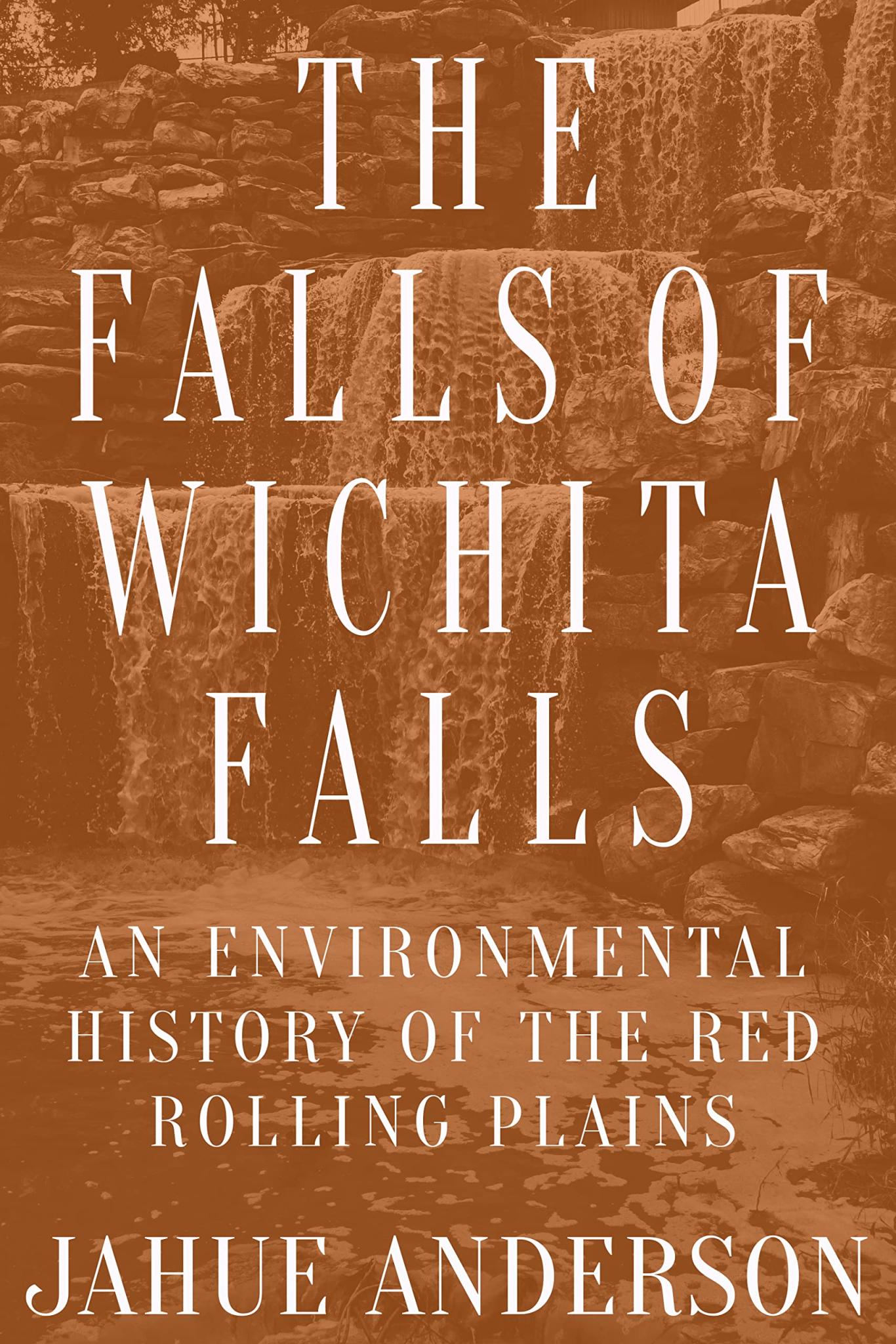
HISTORY
The Falls of Wichita Falls: An Environmental History of the Red Rolling Plains
Jahue Anderson
Texas Tech University Press
April 4, 2023
ISBN 978-1-68283-156-4; 216 pages
In 1886, an intense North Texas spring thunderstorm burst through a man-made dam on the Big Wichita River and leveled the waterfalls that gave Wichita Falls its name. Over the next century, entrepreneurs and region-boosters tried several times to rebuild the falls, only to see their efforts and money swiftly washed away by more flash floods.
Why did this keep happening? In this skillfully written and important new book, Stephenville writer Jahue Anderson makes clear that well-meaning but profit-minded people too often ignored the environmental realities of the Red Rolling Plains, which extends from the Edwards Plateau in South Central Texas to western Oklahoma. These business and civic leaders also failed to seek guidance from people who understood the long-term impacts of the region's flash floods, droughts, dust storms, and brackish water.
"The history of the falls of Wichita Falls," Anderson writes, "highlights the main theme in the environmental history of the Red Rolling Plains. The people never conquered the environment. Instead, they negotiated an existence based on local environmental realities. Humans pushed ecological limits, but nature pushed back."
Anderson, who teaches Texas and U.S. history at Tarleton State University, notes that drought and insufficient water resources were particularly vexing for Wichita Falls as it grew into a regional hub for railroads and agribusiness in the late nineteenth and early twentieth centuries. "Normally during dry spells," he explains, "the Wichita Valley Railroad brought drinking water into Wichita Falls from Seymour, Texas (located on the upper Brazos River). Hawkers sold water by the glass to paying customers near the rail station." But this was hardly enough to keep up.
Desperate Wichita Falls leaders and boosters tried schemes that even included exploding dynamite in the air in hopes of shaking loose more rainfall for the city and surrounding farmlands. But the continuing "aridity problem" plaguing Wichita Falls soon inspired a massive water reclamation reservoir and irrigation project that "focused more on the issue of water quantity and ignored the issue of water quality," Anderson states. Indeed, the captured water contained salt and other substances that damaged the soil and crops and was not safe for drinking. "[T]he dream of idyllic irrigated farmsteads slowly disappeared," he notes.
The author describes how cattle ranchers and oil drillers soon overtook the failed farms. Then, Wichita Falls became home to a U.S. Air Force base. New reservoirs and new sources of water had to be secured—and finally were, he points out. "By the 1980s, the Southern Plains [which includes central and northern Texas; most of western Kansas and Oklahoma; and portions of Nebraska, Colorado, and New Mexico] had experienced one of the most rapid environmental transformations on the continent. In particular on the Red Rolling Plains, railroads, irrigation networks, reservoirs, airfields, suburbs, and oil extraction transformed the region in less than one hundred years into a zone of commercial production for a global economy." But, continuing past mistakes, "[l]ocal government, industry, and business downplayed concerns about the environment to make the most profits as quickly as possible."
The Falls of Wichita Falls highlights important sustainability lessons for developers and business leaders who want to bring growth to their towns and cities. The book also offers a rich collection of notes, an extensive bibliography, and details about other sources that can be helpful when researching the history, ecology, or economic conditions of the Red Rolling Plains. Anderson's new work of environmental history likewise should appeal to many readers concerned about global warming and the effects of climate change.
Jahue Anderson earned a PhD in US History from Texas Christian University in 2009. He is an instructor of history at Tarleton State University, where he teaches United States and Texas history. His interests include environmental history, agricultural history, rural history, the Gilded Age and Progressive Era, and the history of popular music. He enjoys traveling, collecting vinyl records, and relaxing in the country.
